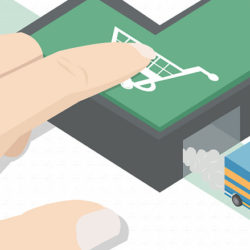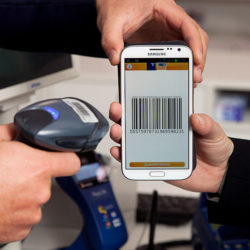How to Market the New Money Market Eco-System
At first, marketing money seems like an odd thing to do. After all, it’s a constant presence in our life and anyone choosing to exist in modern society needs to use currency.
However, technology is changing many parts of our lives and money is one of these parts. Bitcoin and its counterparts are on the rise and people need to know about the new cryptocurrencies available. The question then becomes: How do you market a product that is seeking to replace the current concept of money?
First, focus on your brand identity. This is vital, as your brand identity is one of the major things that will distinguish your cryptocurrency from the numerous other offerings making their way into the market. One of the potential routes is to link yourself to a specific cause and use that to your advantage. Maybe you want your currency to have a link to social justice (like FairCoin, which is aiming to be the coin of fair trade) or want the returns to go to a cause that will better mankind (like GridCoin, which supports scientific research). This decision will radically affect how and to whom you market your currency, so choose wisely.
A very important thing to remember is the fact that cryptocurrency is not a product or service per se, which means your business model will differ from other startups. Whereas typical startups have a business model centered around selling a product or service, a cryptocurrency startup has to work on creating a new circular economy, sending the product (cryptocurrency) into the market and letting it work its way through the consumer base. Your best option is to use this to your advantage, marketing the benefits of your new cryptocurrency.
As public interest in cryptocurrency grows and the presence of cryptocurrencies expands in the stock market, the potential for success will increase, yet the competition will grow much stronger. For a cryptocurrency to succeed, it needs a marketing plan that sets itself apart and draws in loyal customers and investors. Stressing the quality and stability of your cryptocurrency is vital, as is a clear description of its benefits. Do this and you have the opportunity to be a real player in one of the most profitable trading markets of today.
How to Increase Mortgage Sales
So you’ve started a FinTech mortgage company, keen to make your mark in this multi-trillion dollar industry. You filed the proper paperwork to establish the corporation, set up the staff and printed up the business cards. Sadly, business isn’t booming. Are you wondering why this is, considering the hot market FinTech happens to be right now? Well, ask yourself: Did you make these marketing mistakes?
- Blending Into the Background
In a packed marketplace, the companies that stand out and get attention/business are the ones that distinguish themselves from the pack. If you are playing it safe and just offering the same bare minimum as your competitors, you will never get noticed. Make sure you are offering a service that sets you apart (or at least find a way to make it seem like this is the situation) or offer a mortgage buying experience that differs from the conventional.
- Not Following a Plan
You need to have a solid grasp of how you are going to reach your intended market. As a FinTech mortgage company, you are operating in a new and relatively unknown section of the market while competing against the old-school heavyweights. If you do not do your research and set up a solid marketing plan to get your company and product in front of the right potential customers, you will lose business and your startup will never move up the success ladder.
- Neglecting the Follow-Up Calls
Very few sales are made on the first connection. Yes, you have made people aware of your services, but if you don’t do follow-up your product will likely be forgotten as new promotions take prominence. Make follow-up calls and inquire about any questions they might have (i.e. “With so many providers and choices, how do I know which mortgage?” “What do I need to qualify for the mortgage?”). This will help them feel more comfortable with the process and you, which will work in your favor when it comes time for them to choose their mortgage advisor. And if you feel like this is wasted effort, note that 81% of sales are made after the fifth contact has been made—so don’t feel like you are being a nag. All that effort will be worth it when you close a deal, making both you and the future home buyers happy.
If you avoid these common mistakes and successfully execute a marketing process, you will find yourself with a customer base that will grow as word of mouth (from happy clients) spreads.
How Currency Exchange Is Currently Changing
Modern businesses, if they want to compete internationally, need to be prepared to deal with the multiple types of currency that exist in the world. For startups, this may be vital, as casting your net wide is a great way to increase your market share.
If you find yourself in this situation and are constantly struggling with the bank fees associated with currency exchange, it’s time you became aware of the advances FinTech is bringing to the table. One of these advances is digital currency. Naturally, as this is way the wallets of the market are moving, there are numerous options fighting for their business.
First, there is Bitcoin, arguably the most well-known digital currency. However, just because it is well known does not mean it is the only game in town.
Dash, a powerful player in the field (and the 7th most valued cryptocurrency), has recently paired up with Shake Debit Cards to provide people with easy access to the necessary currencies. A major bonus Dash holds over Bitcoin is the fact that it uses anonymization technology, ensuring transaction histories remain private. As well, Dash transactions are confirmed much quicker, a major asset when deadlines are looming.
If the culmination of fees is a worry in your startup, Litecoin aims to offer the lowest (“near-zero cost”) payment system. Open source and decentralized, Litecoin can handle a higher transaction volume than Bitcoin. It also offers wallet encryption, ensuring the safety of its users’ accounts.
On the opposite end of the spectrum (name-wise) is BlackCoin, a peer-to-peer currency with a decentralized public ledger. The network itself is run by the users and these users receive 1% yearly interest.
As the digital currency market continues to grow, the presence of cryptocurrency will become more and more important to businesses. Startups need to start to explore how they can include cryptocurrency in their plans so they are ready when the time comes.
How FinTech Makes Mortgage Buying More Accessible
Buying a house: It’s something most people expect to do at some point in their lives and is seen as one of the steps into full adulthood. However, as the 2008 financial crisis shows, the big banks are not necessarily the ones we should be trusting with our mortgage needs. In fact, thanks to the crisis and the subsequent fallout, fewer than one in three consumers trust the big banks, which means there is a large desire to not support them.
Where do today’s consumers turn, then, when they want to buy a house but don’t have the money hiding in the couch cushions? The majority of house buyers do not want to give their business to the big banks, so where do they turn? Once again, FinTech is here to meet your financial needs and FinTech startups are ready to serve as your new mortgage advisor. Yes, there is no need to give your services to a monolith that has yet to fully embrace technology.
Raisal is a fantastic example of how the FinTech movement is improving the financial experience for the 99%. The Raisal system was designed to modernize the mortgage process, giving people the ability to compare numerous lenders in their area and providing the service and consultation needed to make the house-buying process simple and stress-free. More importantly, it uses unique algorithms to connect borrowers and lenders, speeding up the process for everyone involved.
Another startup seeking to improve the process for today’s mortgage seekers is Morty, which proudly proclaims that it is “the easiest way to get a mortgage in 2016.” One of the founders, Brian Faux, knows the industry well, working as a real estate/mortgage executive before starting the company.
Morty is a fully digital company that aims to simplify the process by using their own database and algorithm to find the right lenders, educate people on their various loan options and let them easily compare their choices in order to come to the perfect end point.
Obviously, FinTech mortgage brokers are a major step up from the process(es) offered by the big banks, giving consumers easy access to the information needed to feel comfortable with their choices. Thanks to FinTech, consumers can easily find a lender and rest assured that they are getting the best deal for what they need. When these new home owners put their house keys in the lock for the first time and cross the threshold, they will be happy and stress-free, knowing they received the best mortgage advice.
How eCommerce Startups Can Acquire Customers
In many cases, FinTech isn’t creating a new concept. Instead, it’s radically improving the systems we already have in place.
Take a look at eCommerce. Its roots trace back to the ‘70s and the early days of computer development and online shopping has become an expected part of many people’s lives. But when it comes down to it, most consumers don’t know how much eCommerce and its counterpart (mobile banking) can do for them. This is problematic, as customers can’t patronize a company they don’t notice.
So how do you fix this problem? Fix the marketing schemes so you can find the audience.
Understand the Differences Between Technologies
In today’s world, eCommerce can be found on many technologies and you need to know how to reach your audiences on these differing venues. Your website and online promotions will differ from your apps and mobile advertising and a knowledge of these technologies is vital in order to know how they can best be used for your purposes. As well, a knowledge of social media is vital in order to promote your business and connect with your potential customers.
Create a Unique Voice
If you want your product to conquer the FinTech marketplace, you need to make sure it and your company stand out. A marketing plan that uses unique techniques and a very distinct voice is the best way to ensure your company will get noticed and stay at the front of people’s minds.
Communicate With Your Client Base
Use your marketing as a way to create a link with your customers, allowing them the chance to offer feedback or ask questions like, “How much do financial advisors cost?” This connection is what will create a sense of brand loyalty and make your product the preferred choice in a sea of options.
Use Various Forms of Content
If all you post is blocks of text, your message will be ignored. Intersperse your written content with pictures and video and the reader will have a much more enjoyable experience learning about your registered investment advisors and investment portfolio tracking.
Reward Your Audience
Introducing either giveaways or contests is a great way to bring in new readers and thank your regulars. (Everyone loves free stuff.) These contests are another way to promote your product by giving you another advertising venue and also are a way to create a new link with your customer base.
Marketing is a vital aspect of any company or product and the FinTech segment of the market is most definitely not an exception to this rule. In fact, considering the relative unfamiliarity consumers have with the many positive aspects of FinTech, proper marketing is even more important to bring in customers. So use the tools available to make people aware of your eCommerce startup and watch the customers stream in.
How Robo-Advisors Can Reach Millennials
The early stages of a startup are very important. This is when the groundwork is laid and when the company makes its first impression on the market. If the right impression is not made and the right people are not met, your startup will be a part of the 90% that fail to create a viable business.
One of the primary decisions that needs to be made is which section of the market you will be targeting. The techniques needed to appeal to the different segments are very different so you need to know your ideal audience is.
Robo-advisors, being a new and technologically-enhanced service and financial advisor/planner, would be wise to target the millennial market—the largest part of the workforce and already technologically savvy. Of course, reaching these customers requires a knowledge of their habits and likes.
Embrace Your Technology
This generation is deeply linked to smartphones and the internet. Any marketing your company employs needs to use these venues to reach millennials. Make sure your promotions both use these technologies and illustrate how your company uses these technologies in its services and in private wealth management.
Embrace Your Social Media
Yes, this is in many ways a new technology, but it has capabilities that are distinct from other technologies. This is the best way to interact with your market, as it allows you to create a real connection (which in turn will create loyal customers). Also, a solid social media marketing hold the potential to go viral, extending your reach beyond current consumers to potential customers.
Embrace Your Brand(ing)
Millennials are very conscious about what is going on in the world at large and want to support a company that shares its ideals. Put yourself out there as a game-changer and a company with a conscience and you will draw the millennials in. Known in the market as Socially Responsible Investing (SRI), many robo-advisors are embracing this angle. One of the newer entries in the marketplace is ModernAdvisor, a company that states it offers, “socially responsible investing via ESG (environmental, social and governance) portfolios.” Environmental causes and social causes both tend to be of great interest to the millennial generation and clearly tying your company to these movements is a great way to draw in the millennial market and their financial portfolios. (37% say they would be willing to pay more if it meant supporting a product and company they believed in.)
Millennials are a very profitable section of the market, comprising 25% of the US population and 21% of consumer discretionary purchases. Knowing how to reach them is vital for survival in today’s market, especially if you’re a company or product that is tied to the technology field. What does this mean? If you are a robo-advisor, you need to start thinking about your millennial marketing schemes.
How Mobile Banking Will Unite The World
Do you hate carrying around a wallet? Do you hate searching for a branch of your bank so you can obtain cash? Fear not, as FinTech is here to live up to its name and take finance through its next technological evolution. Thanks to the increasingly international nature of business, access to financial information needs to be constant and available everywhere, which means banking can no longer be simply a brick-and-mortar institution.
Consider that there are 6.8 billion mobile subscriptions worldwide and large collections of people who do not have access to banks—either because of their remote location or level of income. Mobile banking is (finally) giving financial access to people who had been ignored by the big banks, which is a huge step in banking’s development. If you want a sign of how notable this new banking development is, just look at who is spreading the news. The Bill and Melinda Gates Foundation is putting its backing behind mobile money, proclaiming that the new technology will help impoverished people gain access to the savings and loan tools others have had access to for years. (You can read about this amazing use of the technology here.)
Mobile banking and eCommerce benefits more than just the bankless segments of society. Innovations in mobile banking and eCommerce have created amazing and modern improvements to the banking process. This is incredibly important, as the younger generations (starting with the millennials) have grown up with technology and fully expects this technology integration into every aspect of its life.
Thanks to startups like Number 26, clients can check the app to see their balances, and even use their phone to deposit or withdraw cash at participating stores in Europe. In North America, bankmobile provides clients with payment apps, an easy and mobile way to deposit and/or transfer funds.
Technology is improving lives everywhere and mobile banking and eCommerce are great examples of this. In the new FinTech world, access to needed funds isn’t limited by what the big banks choose to provide. The question then becomes, when you need to choose who gets to manage your money, who are you going to call?
Meet the Modern Investment Advisor: The Robo-Advisor
Money. It tends to be one of most people’s greatest stresses. We worry about making it, we worry about spending it and we worry about saving it. If you weren’t born (or taught how to be) a financial genius, the best thing you can do is enlist a certified financial advisor/planner (CFP) to help ensure your plans are solid and your wealth/portfolio investments are safe. For those people who want to be using the latest technology or the people who, for various reasons, can’t meet a CFP in person, there are robo-advisors.
How Will This Faceless System Know My Needs?
Although you are unlikely to engage in inane small talk, the system is set up so your robo-advisor will be able to decipher your needs and invest your money properly. You will be asked a series of questions and your answers to these questions will be used to design your portfolio of exchange traded funds (ETF).
Is It Safe Trusting My Finances To A Robot?
True, the chosen term for the service is robo-advisor, but don’t let that unnerve you or give you the impression that financial control has been fully handed over to the machines. The wealth/portfolio management robo-advisor system is simply a new tool set up to simplify and update the process for modern investors and human CFPs review your portfolio after it is created.
What Are the Advantages to Robo-Advisors?
The system is set up to fully benefit from modern financial technology, a fact younger investors (having grown up with technology) will likely appreciate. This modern technology means startups like Betterment can use Nobel-prize winning algorithms to create their models.
As the system is more automated than traditional CFPs, robo-advisors are available 24/7, which is fantastic news for shift workers or people with very busy work schedules. The fees are also dramatically lower and investors no longer have to deal with the opportunity cost. These savings are added to your portfolio, compounding your investment.
Another perk? There are no hidden fees with robo-advisors, which means fewer surprises in your portfolio.
Finally, robo-advisors are excellent for new investors or people who may not have sizeable assets to contribute. If you have less than $250, 000 in your portfolio and choose to go the traditional route, finding a management firm will be difficult and your choice of investment services will be limited. Not so with robo-advisors.
Creating and managing wealth is a skill that is vital for a healthy life. When your finances are in order you can devote your attention to the other, more important areas of your life. Now, thanks to robo-advisors, you don’t necessarily have to hand your money over to a system that may be hiding its fees from you and insisting you meet at a time that’s incompatible with your work schedule if you want advice. Feel that stress sliding off your shoulders? That’s the power of FinTech.

















